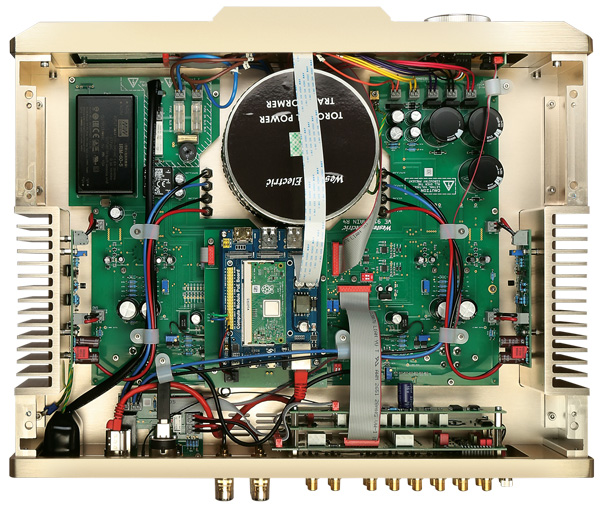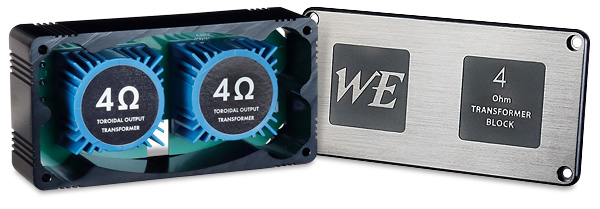Western Electric Type 91E Integrated Amplifier

 If you're a fan of the legendary 300B triode, who better to produce an application for that valve? Western Electric's 91E integrated amplifier may be your dream come true
If you're a fan of the legendary 300B triode, who better to produce an application for that valve? Western Electric's 91E integrated amplifier may be your dream come true
Pedigree? You want pedigree? How about the inventor of the 300B triode? Western Electric's provenance beats all comers, the company dating back to 1869, which kinda trumps any other manufacturer's claims for longevity. Here it is 154 years on with the Type 91E integrated amplifier to dazzle those wedded to single-ended triodes (SETs), yet with enough modern details, both sonic and functional, to ensure it is regarded as a 21st century tube amplifier.
Priced in black or gold for £16,998 or £18,500 for the nickel (silver) finish, the Type 91E's model name exemplifies its descent from the original Western Electric 91A of 1936. It is the antithesis of traditional SETs: instead of minimalism or hair-shirt self-abnegation, the 91E is as contemporary as an integrated amp can be in the post-streaming era. While SET amplifiers date back some 90 years and the 300B itself was introduced in 1938 to amplify telephone signals, everything else about the 91E (bar the lack of a balanced XLR input) is up-to-the-minute.

Golden Boy
It starts with the slick LCD display, which, from switch on, reveals a 10-second view of Western Electric's 'Spirit Of Communication' (or Golden Boy) logo of 1914. After that, it changes to a 30-second countdown for warm-up and then the same time-lapse for the automatic tube biasing. This stage in itself eliminates all manner of insecurities for those too nervous to embrace tech that predates WWII, particularly as the owner's manual states that the 300Bs' behaviour changes over time.
After the warm-up stages, the display then turns into vertical meters indicating power output, with the source identified alongside. A cute touch is an aerial logo when using Bluetooth which is included alongside MM/MC phono and line sources including CD, tuner, Aux 1 and Aux 2. The press buttons to access these reside in an indent to the left of the LCD display, while on its right are a large rotary volume control, power-on button and headphone socket. All functions, by the way, are accessible via the alloy remote control, along with balance, mute and display dimming, as well as level matching between inputs.
The ECC81 and 300B valves – two of each – are proudly displayed, the latter encased within glass sleeves. Between the ECC81s resides a block containing the output/speaker coupling transformers (ours was fitted with 8ohm taps) to be swapped by the retailer should the owner change to speakers with a different load. The 91E also comes with a set of tools for removing the protective 'cages' when it's time to replace the 300Bs, along with a Bluetooth antenna and clever tube-pin straightener.
No Drama
At the back are the multi-way speaker binding posts, the requisite RCA sockets for the five sources and screw post for the Bluetooth aerial, as well as a pair of sockets to accept custom plug-in loads for the phono stage, which employs a toggle switch to select between MM and MC. Also provided are line and variable (preamp) outputs, as well as control ports for triggering other components. The USB and Ethernet ports are strictly for diagnostics and servicing.

There's little set up drama with this amplifier. Indeed, its Bluetooth facility revealed how fully developed is the Type 91E – I selected Bluetooth via the remote, whipped out my Android phone, went to settings, immediately found 'WE91E' on the list of available matches, tapped it and heard music within – literally – seconds. If only all the other Bluetooth devices in my possession worked as swiftly and securely.
Wild Western
The electronic design of the Type 91E is as radical as its industrial aesthetic, writes editor PM. Extra power is squeezed from those single 300Bs without raising the tube current or dissipation and while also reducing asymmetric magnetic distortions in what are smaller, more compact output transformers. (The plates are capacitor-coupled to the transformer primaries, eliminating DC from the windings).
What WE describes as an 'enhanced parallel feed' relies on a patented SCS (a solid-state 'steered current source') for the 300Bs – visible on the heatsinks of our inside picture. Drilling into the patent, it's been suggested that these P-type FETs might behave as driven output devices as much as SCS regulators which, arguably, invites a push-pull component to the single-ended party. But there are also solid-state op-amps in the line/preamp output circuit and these are certainly not used in the main 'tube audio' path. In another neat touch, the 300Bs' filament polarity is switched each time the 91E is powered on, enhancing tube life.


























































